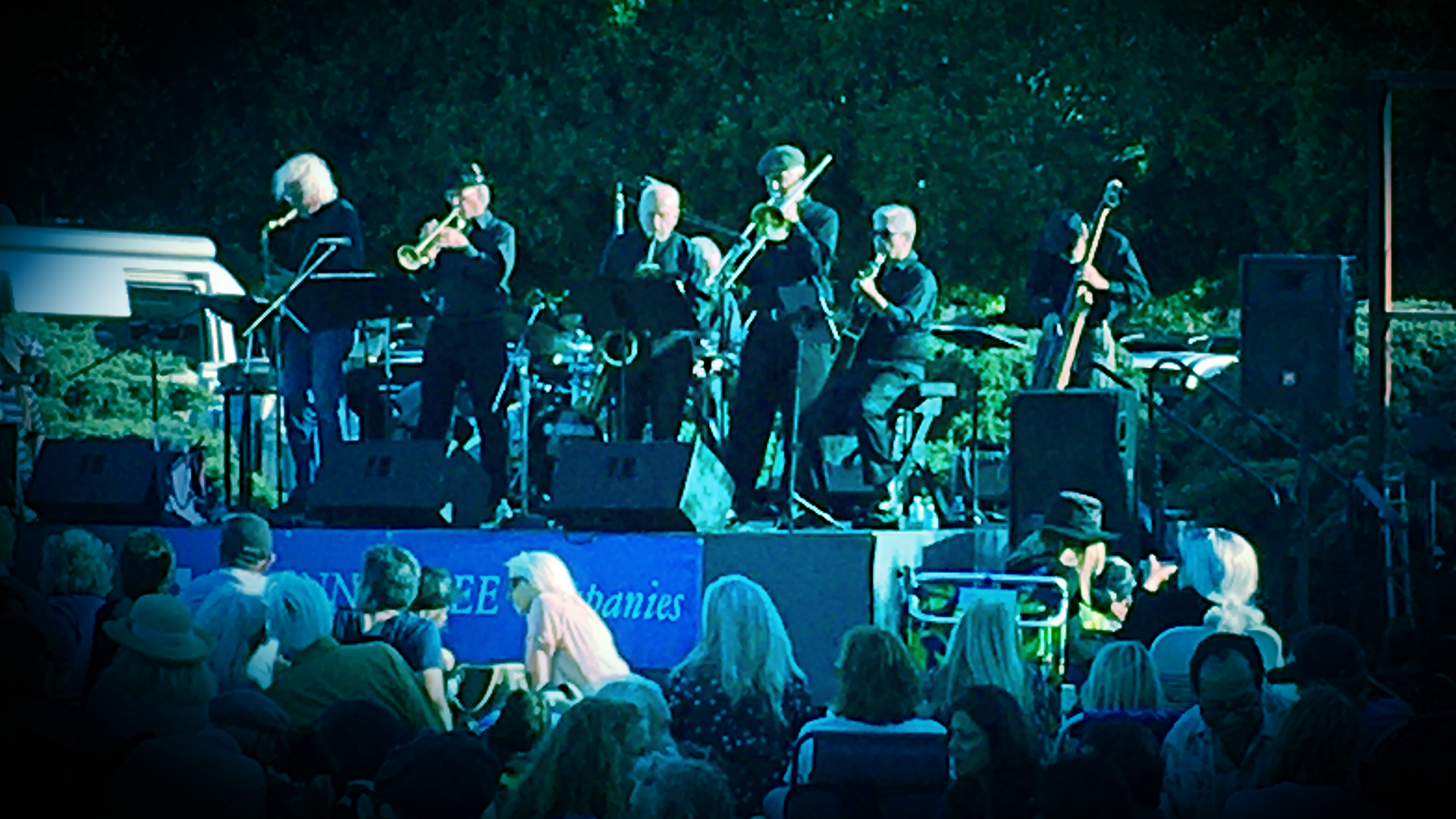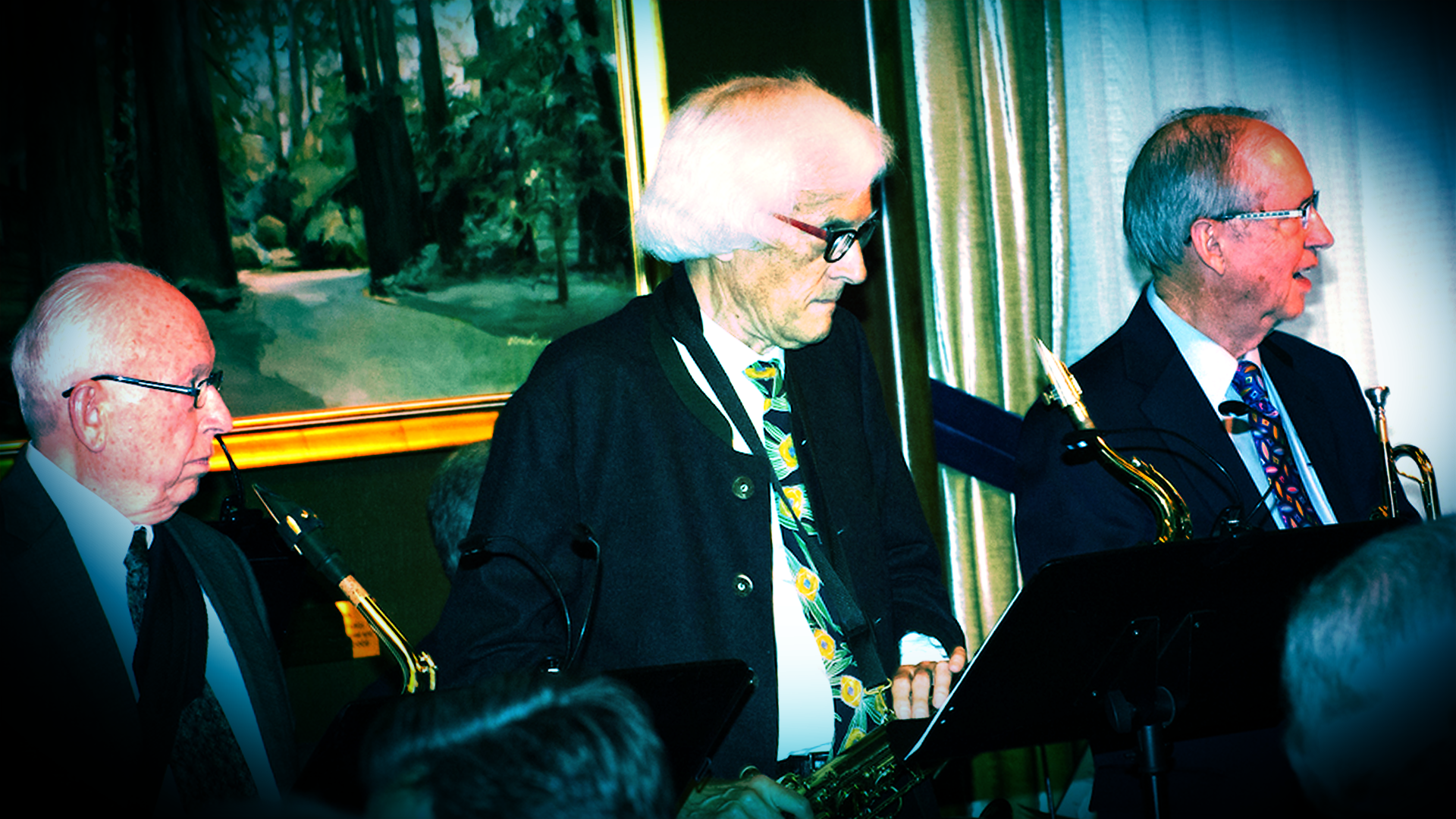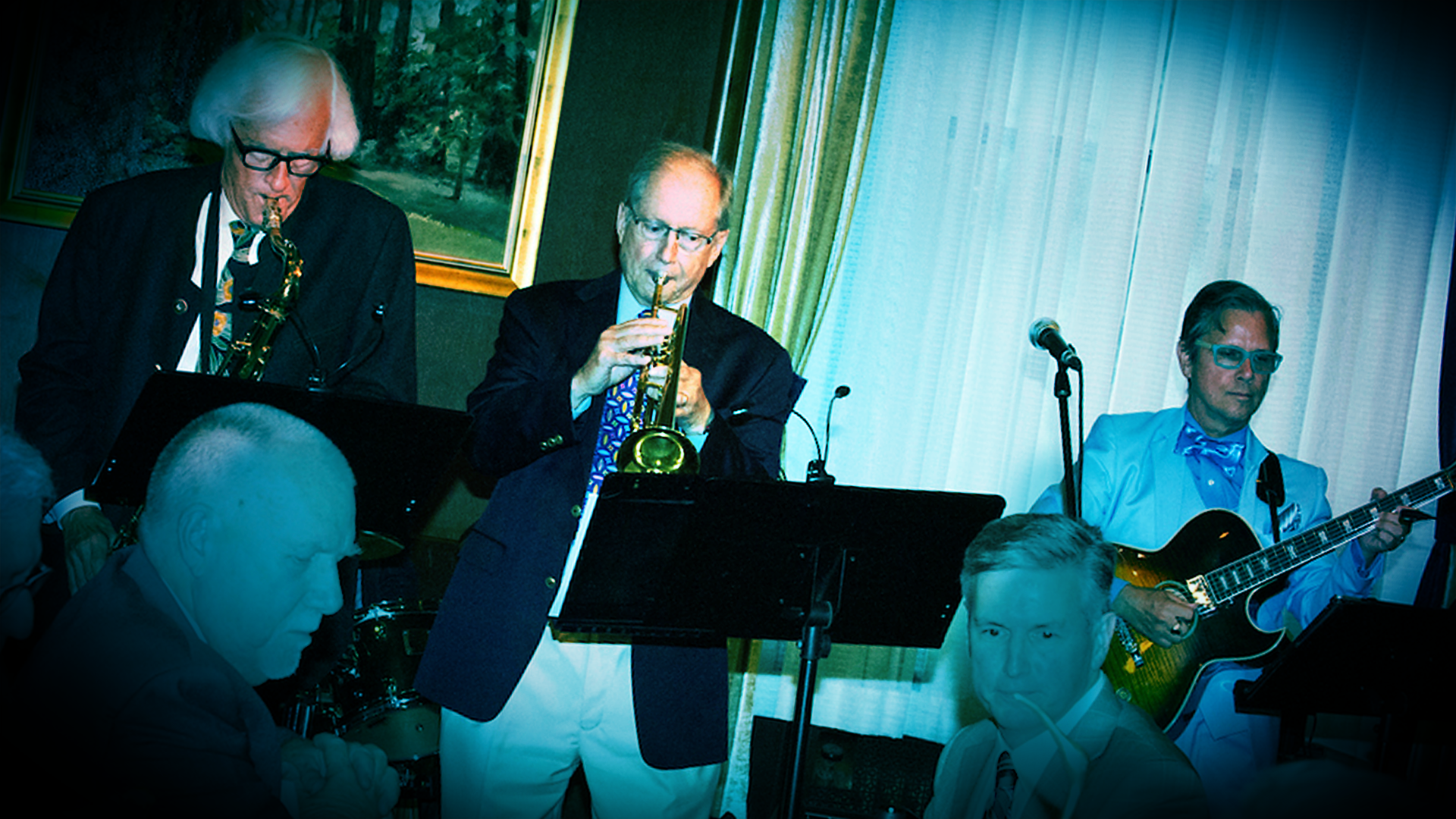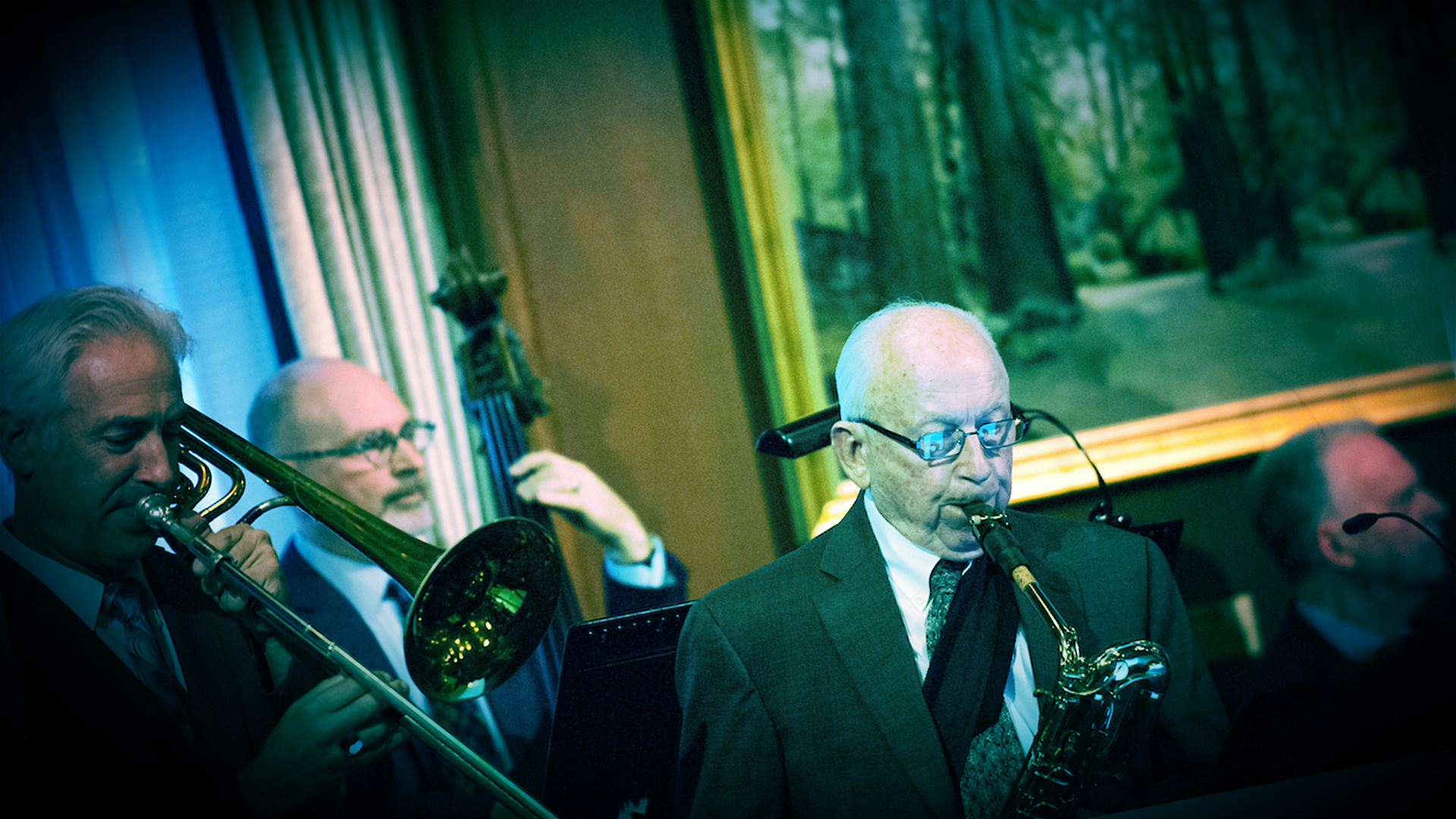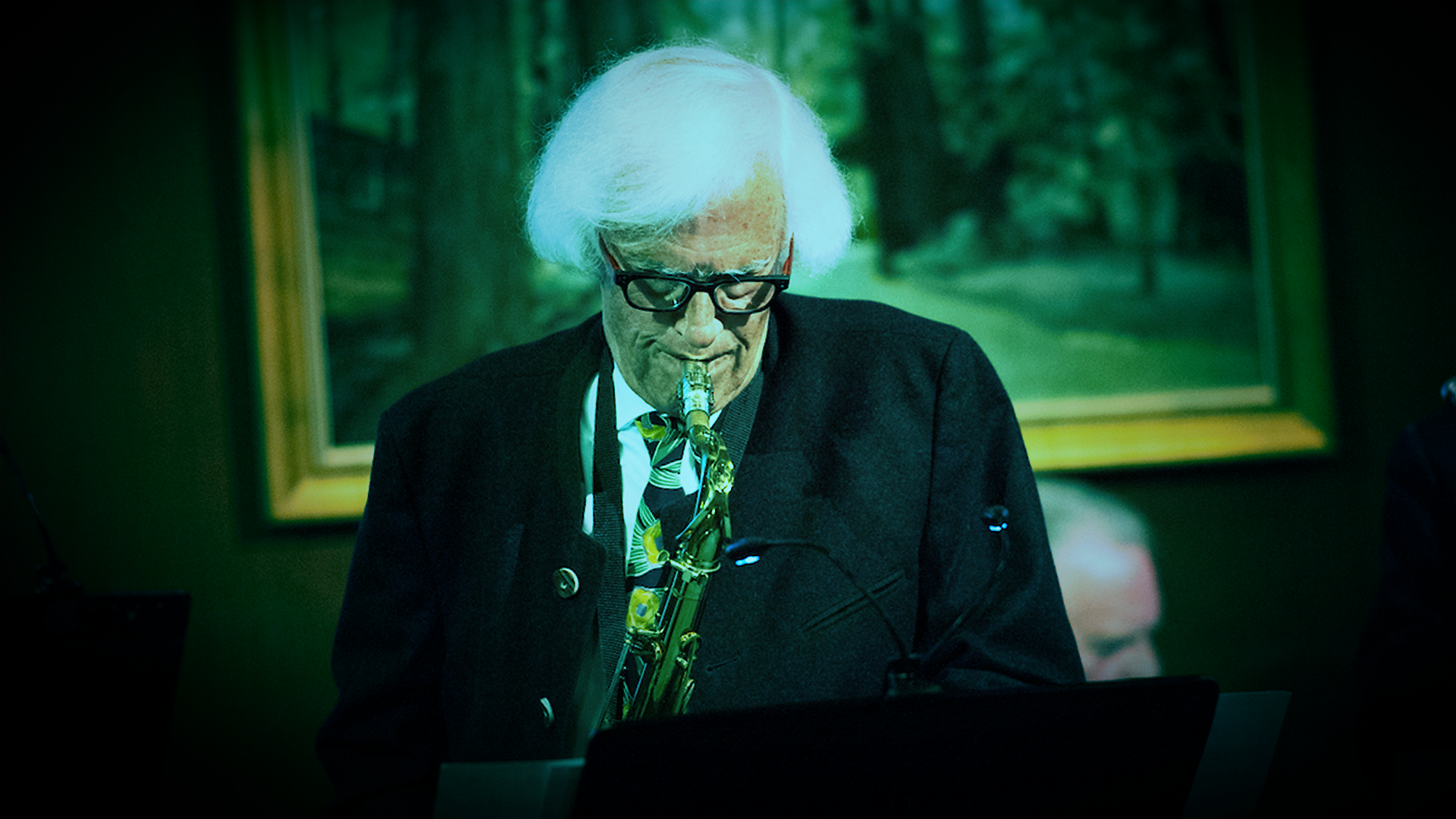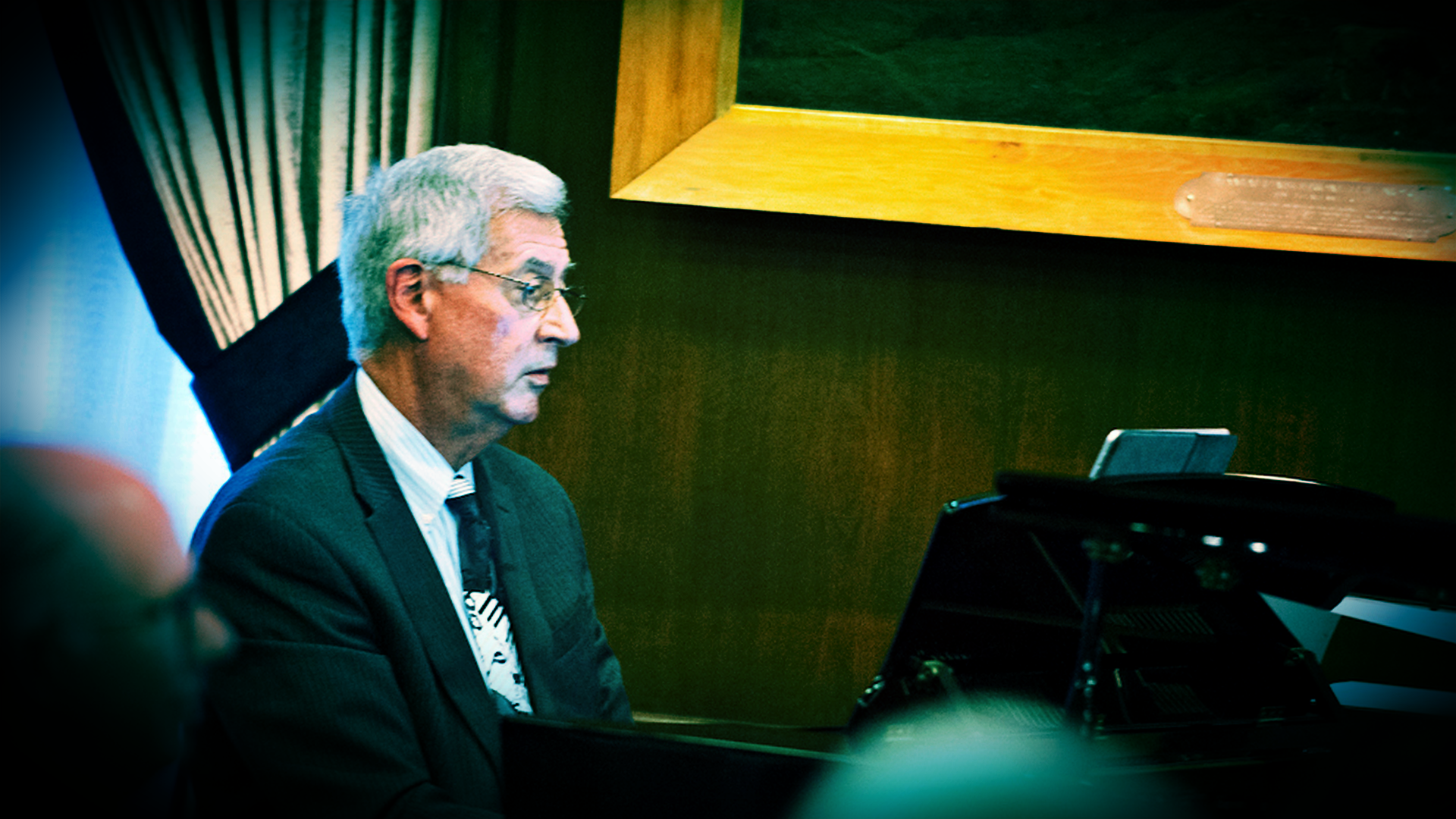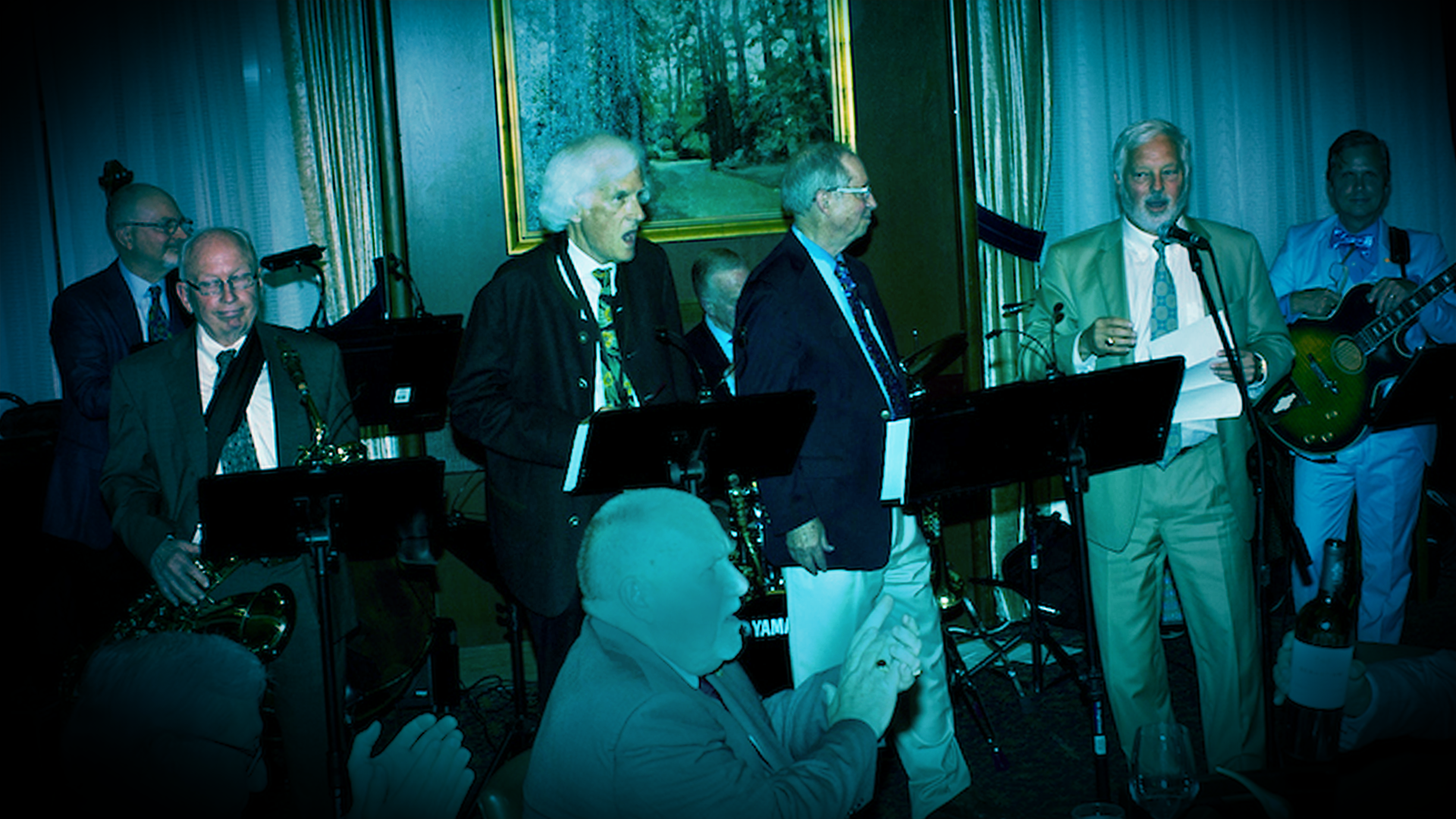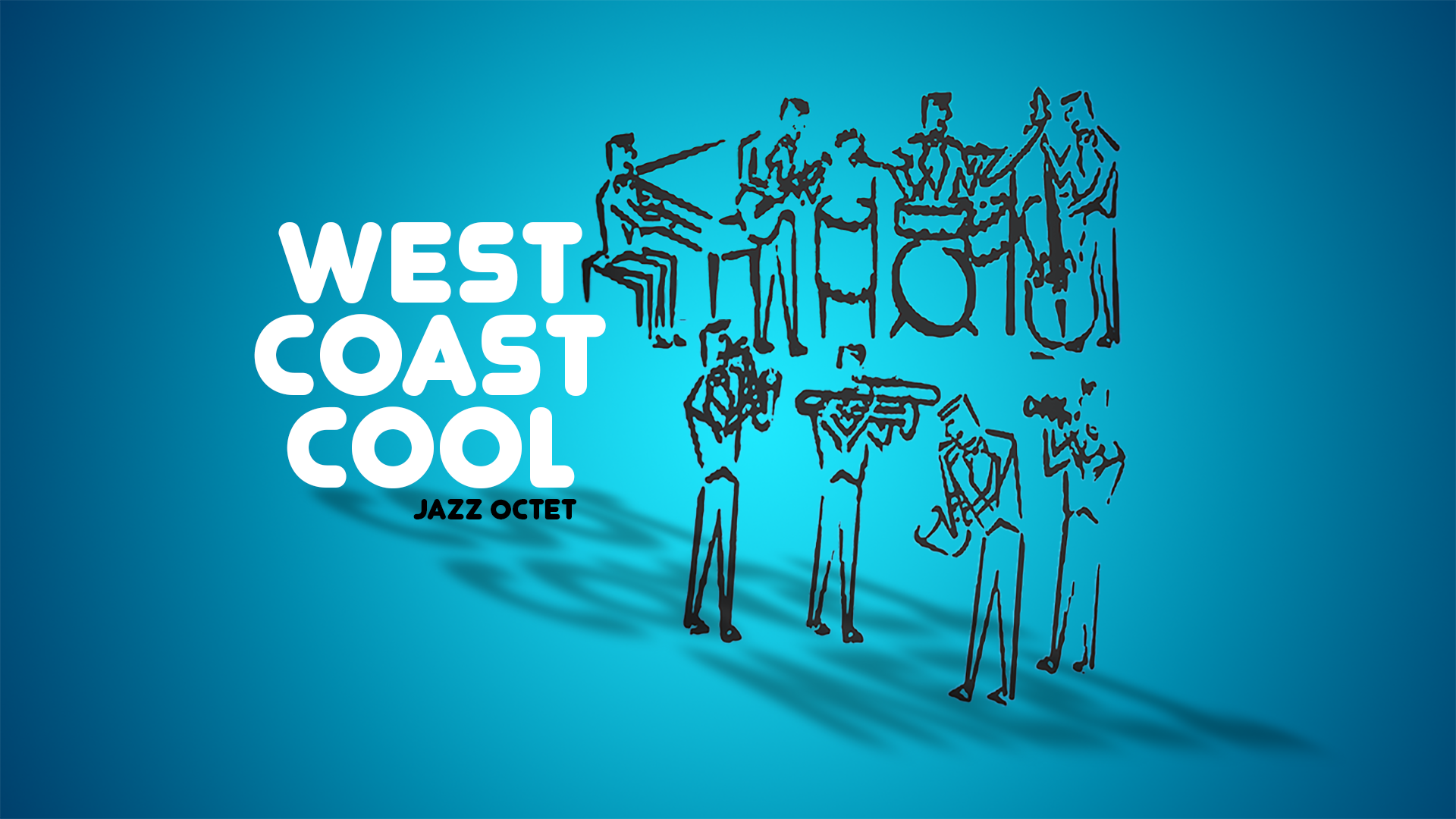
About West Coast Cool
Mike Kelly • Band Leader and Trumpet
Bruce Jobson • Tenor and Alto Saxophone
Tony Davids • Trombone
Larry Curtis • Baritone and Alto Saxophone
Jeff O'Sammon • Guitar
Mike Wray • Piano
Mark Culbertson • Bass
Hal Solin • Drums
Bruce Jobson • Tenor and Alto Saxophone
Tony Davids • Trombone
Larry Curtis • Baritone and Alto Saxophone
Jeff O'Sammon • Guitar
Mike Wray • Piano
Mark Culbertson • Bass
Hal Solin • Drums
The Dave Pell Octet was formed in 1958 and is really the focus of this group.
Pell played in his teens with the big bands of Tony Pastor, Bob Astor, and Bobby Sherwood. In the 1940s he moved to California, where he played on Bob Crosby's radio show in 1946 and became a member of Les Brown's band from 1947 to 1955.
In 1953, he began working with his own ensembles, mostly as an octet with Pell on tenor saxophone, another saxophone (either a baritone or an alto), trumpet, trombone, guitar, and a piano-bass-drums rhythm section).[2] Among the octet players were Pepper Adams, Benny Carter, Mel Lewis, Red Mitchell, Marty Paich, Art Pepper and, early his career, John Williams. These ensembles recorded in the 1950s for Atlantic, Kapp, Coral, Capitol, and RCA Victor. Pell also worked as a sideman for Shorty Rogers, Pete Rugolo, Benny Goodman, and Gene Krupa. He produced music in the 1950s and 1960s for Tops, Uni and Liberty; among his credits were singles by Gary Lewis & the Playboys. Source: Wikipedia
Autumn 2018 Arts and Culture California
Every 50 years or so, California makes a claim for jazz preeminence—and then loses its way. Will it work out better this time?
Don’t believe anyone who tells you that jazz originated on the West Coast. It’s just the word for jazz that started out in California. But it could have been so much more.
The term first appeared in the Los Angeles Times in 1912, when a baseball pitcher bragged about his “jazz ball”—so wobbly that no one could hit it. Soon the word showed up in San Francisco newspapers, also in a sports context. Before long, “jazz” was linked to anything different, exciting, or dynamic. Around 1915, people finally connected the word with a hot new style of music that would soon take the nation by storm. New Orleans gets credit for originating the music itself, nurturing this bold performance style at least a decade before it got christened as jazz. But California might have taken over the music, too, and set itself up as a home base for the first generation of jazz performers. The musicians were willing, and, for a while, it looked as though it would happen. That was the first wave of West Coast jazz.
By my measure, there have been two subsequent waves—extraordinary moments when California stepped to the forefront of the genre and seemed ready to assert itself as the creative center and trendsetter in the music. The first two waves crested and ended in failure. The third wave is happening now.
The first golden age of West Coast jazz offers an intriguing case study in missed opportunities. At an early juncture, New Orleans jazz musicians looked for opportunities elsewhere, and California proved alluring. In 1894, the Southern Pacific introduced the Sunset Limited, offering regular train service from New Orleans to Los Angeles—only the second transcontinental route in the United States. More than 20 years before the Panama Canal opened up a practical sea route, passengers could travel by rail to California in just 60 hours.
An extraordinary roster of jazz talent would take advantage of this fast track to Los Angeles. New Orleans–born pianist Jelly Roll Morton made some of the most important jazz records during his stay in Chicago in the mid-1920s; but Morton spent five years on the West Coast before those midwestern glory days, including stints in Los Angeles, San Francisco, Oakland, Tacoma, and Vancouver. King Oliver is now celebrated as the hero of Chicago jazz, and his hiring of Louis Armstrong in 1922 marks a milestone in the art form’s history. But Oliver was gigging on the West Coast before setting up shop in Chicago—and, under different circumstances, might have brought Armstrong to California instead. New Orleans trumpeter Freddie Keppard came to L.A. in 1914 and performed there with the greatest jazz ensemble of its day, the Original Creole Band. New Orleans trombonist Kid Ory moved to L.A. in 1919 and made the first record of black New Orleans jazz at a studio in Santa Monica—just a few yards from the Pacific Ocean.
Every 50 years or so, California makes a claim for jazz preeminence—and then loses its way. Will it work out better this time?
Don’t believe anyone who tells you that jazz originated on the West Coast. It’s just the word for jazz that started out in California. But it could have been so much more.
The term first appeared in the Los Angeles Times in 1912, when a baseball pitcher bragged about his “jazz ball”—so wobbly that no one could hit it. Soon the word showed up in San Francisco newspapers, also in a sports context. Before long, “jazz” was linked to anything different, exciting, or dynamic. Around 1915, people finally connected the word with a hot new style of music that would soon take the nation by storm. New Orleans gets credit for originating the music itself, nurturing this bold performance style at least a decade before it got christened as jazz. But California might have taken over the music, too, and set itself up as a home base for the first generation of jazz performers. The musicians were willing, and, for a while, it looked as though it would happen. That was the first wave of West Coast jazz.
By my measure, there have been two subsequent waves—extraordinary moments when California stepped to the forefront of the genre and seemed ready to assert itself as the creative center and trendsetter in the music. The first two waves crested and ended in failure. The third wave is happening now.
The first golden age of West Coast jazz offers an intriguing case study in missed opportunities. At an early juncture, New Orleans jazz musicians looked for opportunities elsewhere, and California proved alluring. In 1894, the Southern Pacific introduced the Sunset Limited, offering regular train service from New Orleans to Los Angeles—only the second transcontinental route in the United States. More than 20 years before the Panama Canal opened up a practical sea route, passengers could travel by rail to California in just 60 hours.
An extraordinary roster of jazz talent would take advantage of this fast track to Los Angeles. New Orleans–born pianist Jelly Roll Morton made some of the most important jazz records during his stay in Chicago in the mid-1920s; but Morton spent five years on the West Coast before those midwestern glory days, including stints in Los Angeles, San Francisco, Oakland, Tacoma, and Vancouver. King Oliver is now celebrated as the hero of Chicago jazz, and his hiring of Louis Armstrong in 1922 marks a milestone in the art form’s history. But Oliver was gigging on the West Coast before setting up shop in Chicago—and, under different circumstances, might have brought Armstrong to California instead. New Orleans trumpeter Freddie Keppard came to L.A. in 1914 and performed there with the greatest jazz ensemble of its day, the Original Creole Band. New Orleans trombonist Kid Ory moved to L.A. in 1919 and made the first record of black New Orleans jazz at a studio in Santa Monica—just a few yards from the Pacific Ocean.
Russ Taylor • Piano
Dave Brossard • Bass
Ken Coombs • Trombone
Dave Brossard • Bass
Ken Coombs • Trombone
Upcoming Shows
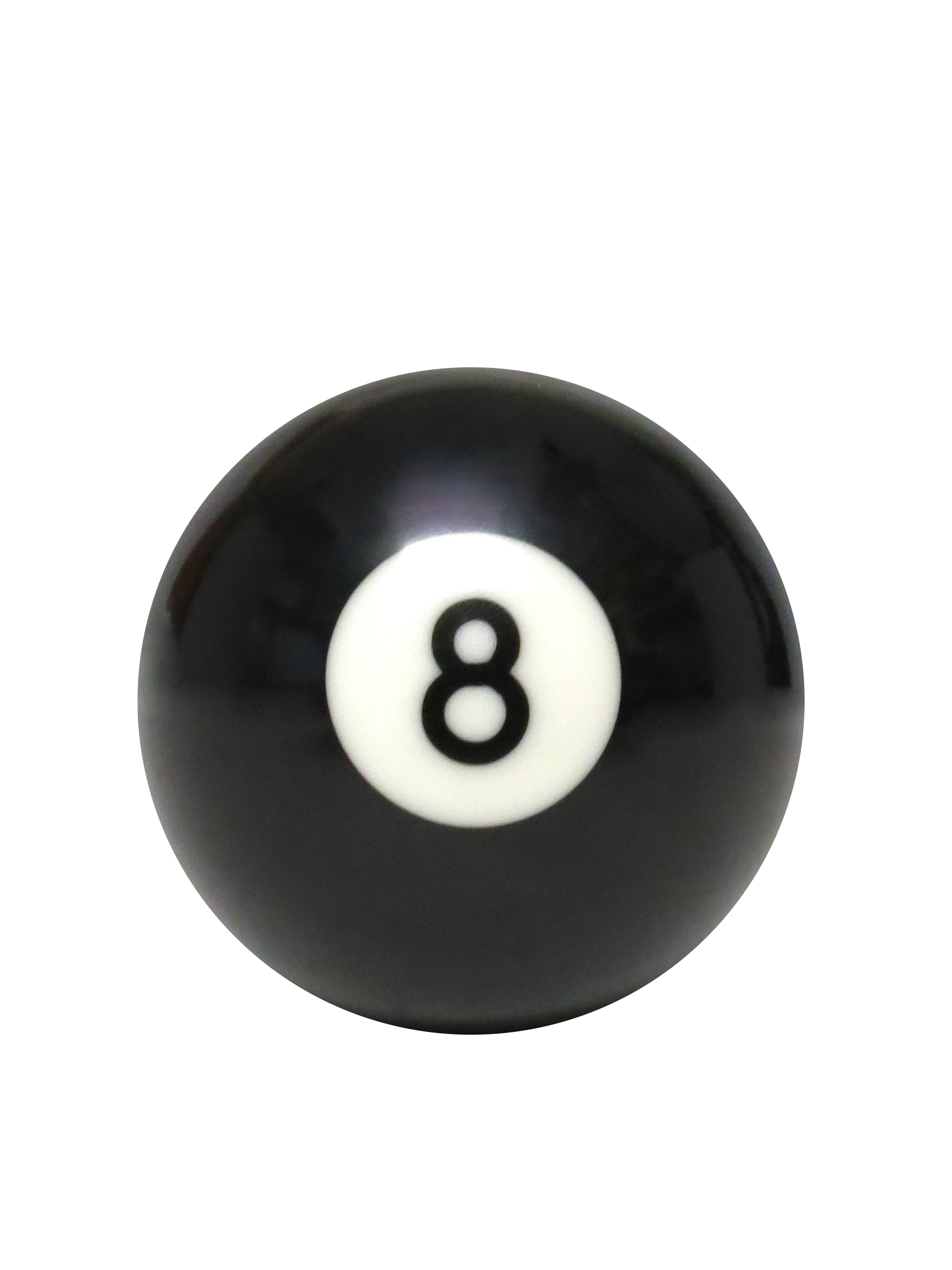 |
August 15, 2024 • The Redwoods Residences 40 Camino Alto - Mill Valley 7-8 PM • Gig link |
 |
July 12, 2024 • SF Zoo Sloat @ Great Hwy. San Francisco 5-7 PM • Gig link |
 |
April 24, 2024 • The Tamalpais of Marin 502 Via Casitas - Greenbrae 4:00 - 5:30 PM |
Past Shows
 |
April 24, 2024 • The Tamalpais of Marin 502 Via Casitas - Greenbrae 4:00 - 5:30 PM |
 |
September 6, 2023 • Sausalito 5:30-7pm • Gig link |
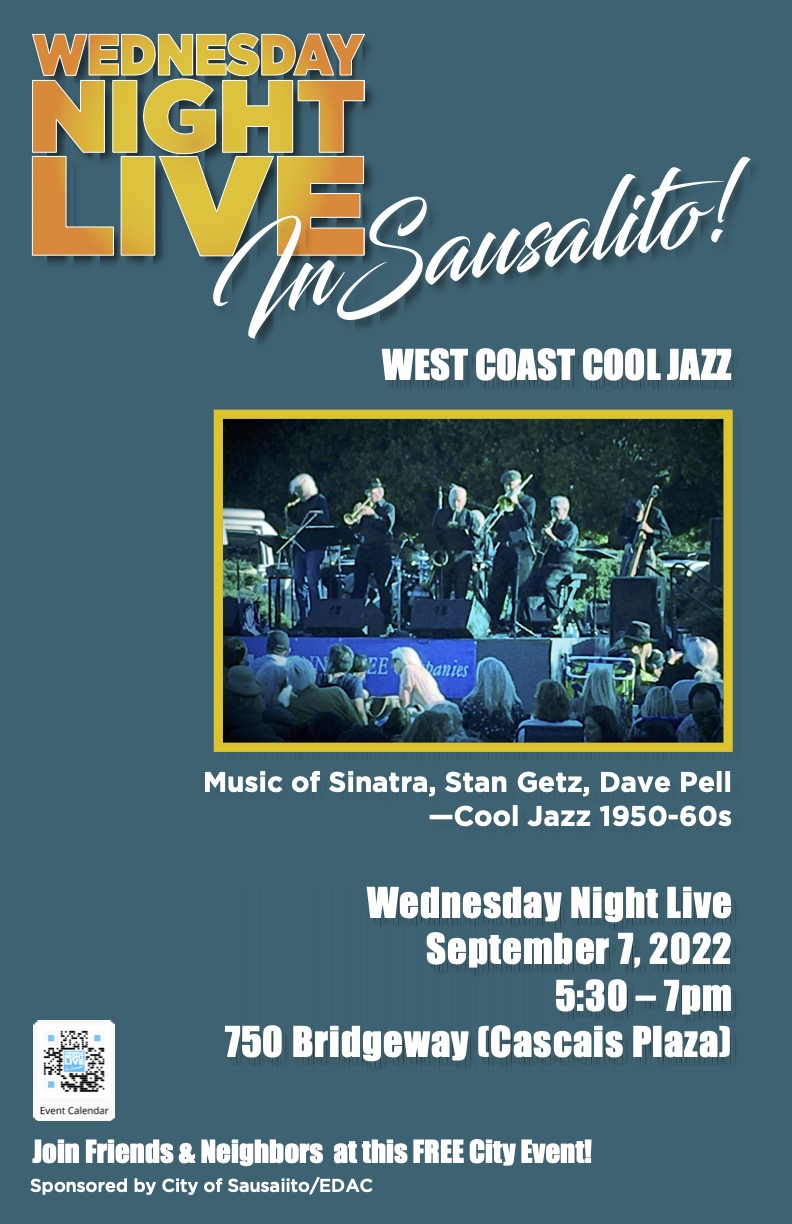 |
September 7, 2022 • Sausalito 5:30-7pm • Gig link |
At The Zoo 7-12-24
At The Zoo 7-12-24 playing for a crowd of a couple hundred people and their dancing kids
Ignacio Rotary Club
West Coast Cool in Novato, California playing for the Ignacio Rotary Club
Jazz By The Bay
West Coast Cool at Jazz By the Bay in Sausalito, CA

